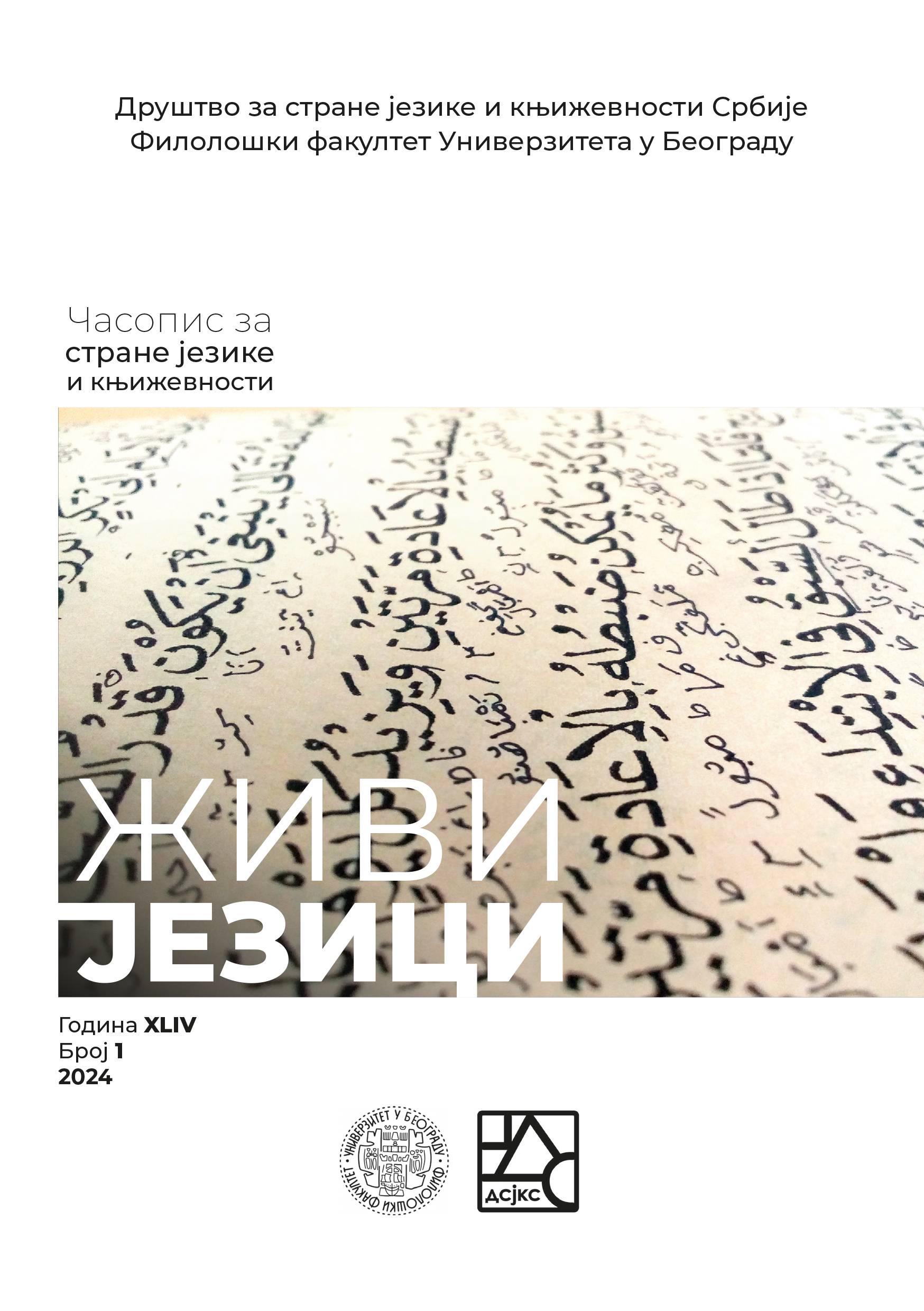PREPREZENTACIJA GLUVIH ŽENA U ISTORIJSKIM MONOGRAFIJAMA ČUJUĆIH AUTORA
DOI:
https://doi.org/10.18485/zivjez.2024.44.1.9Ključne reči:
gluve žene, istorijska reprezentacija, marginalizacija, studije gluvih, rodna pristrasnostApstrakt
Ovaj rad istražuje istorijsku zastupljenost gluvih žena u opštim i specijalizovanim istorijskim tekstovima. Uprkos njihovom značajnom doprinosu, gluve žene se često zanemaruju, što dovodi do percepcije njihovog identiteta prvenstveno kao gluvih pojedinaca, a ne kao žena. Ova dvostruka marginalizacija i unutar zajednice gluvih i šireg društva naglašava sistemska pitanja u istorijskoj nauci. Glavni radovi autora kao što su Sachs, Lane i Bainton, iako su ključni u dokumentovanju kulture gluvih, često zanemaruju jedinstvena iskustva i dostignuća gluvih žena. Ključne prekretnice, poput izbora Gertrude Galovej za prvu ženu predsednicu Nacionalne asocijacije gluvih u SAD i osnivanje udruženja Deaf Women United Inc. (DWU), su minimalno istražene, odražavajući šire društvene rodne predrasude. Ovaj rad naglašava kritičnu potrebu za inkluzivnim istorijskim narativima koji u potpunosti integrišu iskustva gluvih žena. Dokumentovanjem i priznavanjem njihovih jedinstvenih izazova i doprinosa, možemo podstaći sveobuhvatnije i pravičnije razumevanje istorije, osnažujući gluve žene potvrđivanjem njihovog identiteta i dostignuća.
Ključne reči: gluve žene, istorijska reprezentacija, marginalizacija, studije gluvih, rodna pristrasnost.
Reference
Bayton 1996: D. Baynton, Forbidden Signs: American Culture and the Campaign Against Sign Language. University of Chicago Press.
Beard 1933: M. Beard, Woman as Force in History. New York: Macmillan.
Blumenthal-Kelly 2016: A. Blumenthal-Kelly, Perspectives on Deaf Women’s History and Contributions. In M. Kelly (ed.), Studies in Deaf Women’s History. Washington, D.C.: Gallaudet University Press.
Castañeda 1990: A. Castañeda, Compensatory and Contribution Histories in Understanding Marginalized Groups. Journal of Historical Methods, 24(3), 219–238.
Crenshaw 1989: K. Crenshaw, Demarginalizing the Intersection of Race and Sex: A Black Feminist Critique of Antidiscrimination Doctrine, Feminist Theory, and Antiracist Politics. University of Chicago Legal Forum, 1989(1), 139–167.
Garland-Thomson 2005: R. Garland-Thomson, Disability and the Theory of Intersectionality. In L.J. Davis (ed.), The Disability Studies Reader (pp. 73–87). New York: Routledge.
Gertz 1996: G. Gertz, Intersectionality of Gender and Disability in Deaf Women’s Studies. American Annals of the Deaf, 141(4), 457–468.
Hurwitz 1993: V. Hurwitz, Introduction to Deaf Women’s Studies Course Curriculum. Rochester: National Technical Institute for the Deaf.
Karenga 2002: M. Karenga, Introduction to Black Studies, 3rd ed. Los Angeles: University of Sankore Press.
Katz 1996: C.K. Katz, A Comparative Analysis of Deaf, Women, and Black Studies. In Deaf Studies IV Conference Proceedings: Visions of the Past – Visions of the Future. Washington, D.C.: Gallaudet University College for Continuing Education.
Kelly 2016: A.B. Kelly, Deaf HERstory: Making Strides. Sign Language Studies, 17(1), 122-129.
Kusters 2017: A. Kusters, Deaf Space in Sub-Saharan Africa: Insights from Ghana, Kenya, and South Africa. In A. Kusters, M. De Meulder, and D. O’Brien (eds.), It’s a Small World: International Deaf Spaces and Encounters. Washington, D.C.: Gallaudet University Press.
Ladd 2003: P. Ladd, Understanding Deaf Culture: In Search of Deafhood. Clevedon: Multilingual Matters.
Lane 1984: H. Lane, When the Mind Hears: A History of the Deaf. New York: Vintage.
Lane, Hoffmeister and Bahan 1996: H.L. Lane, R. Hoffmeister, B.J. Bahan, A Journey into the Deaf-world. Dawn Sign Press.
Lerner 1975: G. Lerner, Placing Women in History: Definitions and Challenges. Feminist Studies, 5, 14-6. DOI: 10.2307/3518951.
Lerner 1994: G. Lerner, The Creation of Feminist Consciousness: From the Middle Ages to Eighteen-Seventy. New York: Oxford University Press.
Monaghan, Schmaling, Nakamura and Turner 2003: L. Monaghan, C. Schmaling, K. Nakamura, and G.H. Turner, Many Ways to Be Deaf: International Variation in Deaf Communities. Washington, D.C.: Gallaudet University Press.
Nakamura 2006: K. Nakamura, Deaf in Japan: Signing and the Politics of Identity. Ithaca: Cornell University Press.
Padden and Humphries 2005: C. Padden and T. Humphries, Inside Deaf Culture. Cambridge: Harvard University Press.
Pizan 1982: de C. Pizan, The Book of the City of Ladies (E.J. Richards, Trans.). New York: Persea. (Original work published 1404).
Sacks 1989: O. Sacks, Seeing Voices: A Journey into the World of the Deaf. Berkeley: University of California Press.
Stanton, Anthony, Gage and Harper 1969: E.C. Stanton, S.B. Anthony, M.J. Gage, I.H. Harper, History of Woman Suffrage. New York: Arno Press.
Stokoe, Croneberg and Casterline 1965: W.C. Stokoe, C.G. Croneberg, D.S. Casterline, A Dictionary of American Sign Language on Linguistic Principles. Washington, D.C.: Gallaudet College Press,
Van Cleve and Crouch 1989: J. Van Cleve, B. Crouch, A Place of Their Own: Creating the Deaf Community in America. Washington. D.C.: Gallaudet University Press.
Downloads
Objavljeno
Kako citirati
Broj časopisa
Sekcija
Licenca
Sva prava zadržana (c) 2024 Ana Jovanović

Ovaj rad je pod Creative Commons Autorstvo-Nekomercijalno-Deli pod istim uslovima 4.0 Internacionalna licenca.


